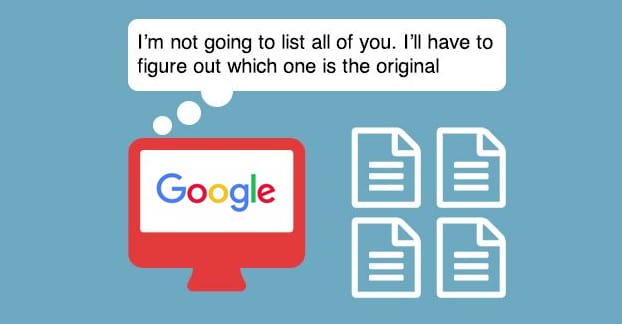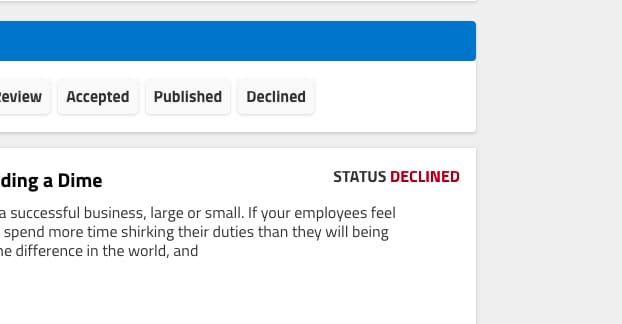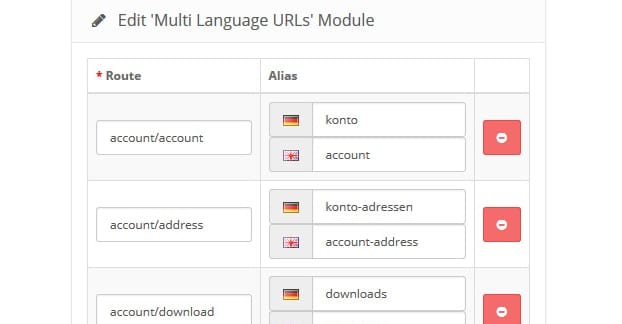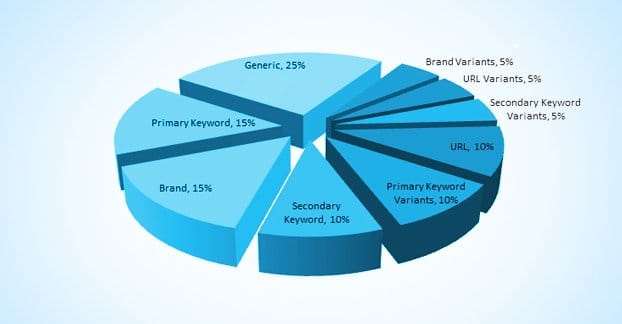There’s a certain kind of thought process I’ve seen time and time again. It relates to guest posting, but also to other forms of work. I’ve seen it in graphic design, I’ve seen it in academic papers, and in countless other areas of creative work.
The thought process goes a little something like this. First, you recognize that you have to do one task repeatedly. That task can get you value, so you want to do it, but it’s a lot of work each time you do it. Second, you realize that the clients for the tasks differ. Person A might hire you to do the task once, person B hires you to do it once, and person C hires you to do it once.
Third, you realize that persons A, B, and C do not communicate with each other and have no contact with each other. That leads you to the fourth thought, which is “if I do the work once and submit it to all three people, no one will ever know.”
Now you can see where it applies to various creative arenas. A student might submit the same idea for a term paper to several different professors, hoping to only have to write the paper once. A graphic artist might create a very basic template for their design and only customize a few small elements, recognizing that 99% of their clients are never going to be famous enough to be visible to each other.
A business like yours or mine might realize that guest posting is a great way to build links and awareness, but that writing individual guest posts is a lot of work. Why not just submit the same post to multiple sites?
Duplicated Content
I’m here to tell you that submitting the same article to multiple different sites is very definitely NOT a safe technique. There’s one key difference between the academic and graphic design examples, and the business blog example.
The difference is the presence of Google.
Google goes out of their way to index massive portions of the internet. It’s their entire purpose. The larger their index, the better they are at serving good content to the people who want it.
Now think about the one key element of protection for the graphic designer; obscurity. No one calls them out on giving very similar results to three different companies, because those three companies are all too small to every come into contact with one another. It would be extraordinarily bad luck for, say, two competitors to hire the same graphic designer and get very similar results.
With Google indexing the web, you can bet that Google will see both instances of the content. In fact, if you’re trying to build links or awareness, that’s what you want! If Google doesn’t see it, it doesn’t count towards your SEO, after all.
Way back before 2011, this was a fine technique. People would take their one blog post and would repost it on a dozen different sites, like Hubpages or Squidoo. A modern equivalent might be posting your blog posts on both your own blog and on Medium.com.
So what changed in 2011? You know it; Google’s panda update. Panda focused primarily on duplicate content issues, and with good reason. If you used the internet back before 2011, you knew it was common to have to go to the second or third page of Google to find new and unique results. The first page would be dominated with the same piece of content, copied and posted on a dozen different sites. To find anything new, you had to dig.
Obviously, this isn’t good search engine behavior. That content should rank once, and the other alternatives should rank as well. If the content is duplicated, how valuable is it? It’s hard to say.
Google’s solution was to basically penalize every instance of duplicated content that was not the first, original source of the content. So if you had one blog post you wrote and published on your site, then published on a bunch of other sites, those other sites would end up penalized. Of course, Google often failed to identify the appropriate source, or just didn’t bother, and penalized all instances of the duplicate content in favor of more unique content.
Let me tell you, this was a bit of a golden age for freelance writers and ghostwriters. Thousands, tens of thousands of companies suddenly needed massive amounts of content rewritten to be unique so it would pass Panda. Meanwhile, many large-scale content mills, sites aimed at being host to these secondary publications of content, folded and collapsed overnight.
Needless to say, these day, it’s really not a good idea to submit content to multiple pages. There are a few different possible outcomes, none of them good.
The first outcome is that multiple pages accept the content. If I submit the same guest post to Inc, Entrepreneur, Business.com, and FastCompany, and they all decide to publish it, suddenly they all look like they’re copying content from one another. Google could very well penalize all of them, meaning the guest post performs exceptionally poorly. Not only is the site liable to delete the content to save themselves the penalty, they’re also likely to blacklist you for getting them into trouble. You lose the link, the awareness, and the potential for any future guest posts with that company.
The second possible outcome is that they do a search and find that the content is already published with another company or on your site directly. They will either reject it outright and ask for unique content, or they will reject it outright and blacklist you. Now, you’re less likely to be blacklisted by everyone you submitted the content to, but you’ll be blacklisted by those second on the list, and that’s still a bad thing.
The third possible outcome is that they publish the content and maintain the links back to your site, even through the penalty. See, a site like Entrepreneur or Inc has a lot of SEO value in itself. They can take a small hit from one piece of content, and have the plausible deniability to say they didn’t discover that it was duplicated. On the other hand, Google penalizes those pages, and when Google realizes all of them link back to your site, they’ll penalize your site as well. YOUR site tanks, while the other sites power through, and you’re left in agony over your shortcut.
Valid Article Duplication
Now, all of that said, there are a few instances where duplicated content can be useful or valuable to your site. That said, it’s pretty much never as a guest post.
The first possible cause is translation. Google doesn’t really track content duplication across different languages, and they don’t penalize for it, because each unique language is value to a different audience.
If you submit your blog posts as guest posts on a site that caters to an audience exclusively in Spanish, the Spanish versions of your posts are not going to hurt you.
On the other hand, they aren’t going to help you much either. After all, how many of the people in that exclusively Spanish audience are going to want to read your English-only site? Maybe in some cases they’ll be willing to make a purchase from you, but it’s pretty rare, and Google isn’t going to assign too much link value through those cross-language links.
What this does not mean is that you can just run your content through Google translate and call it a day. You need an actual human translator to make the content fluent in whatever language you want to publish it. Otherwise it’s just as bad as that ESL crap you can barely read in English; not valuable, not useful, not readable.
Article Syndication
Another possible way to get value out of duplicate content is through article syndication. Article syndication is when you submit duplicate content to a site and that site knowingly publishes it. So what’s going on here? How is it valuable when other instances of duplicate content are not?
The solution lies in canonicalization. Many big syndication proponents don’t mention this, and that leads to small sites hurting themselves in their rush to take advantage of a risky technique.
Canonicalization is a bit of meta data that tells Google when it finds a piece of duplicate content that the content is intentionally duplicated, and that one specific version is the real version. If you syndicate content on a site, that site should be using a canonical link to point at your site.
Not all syndication sites do this, though they often have flags in the text itself saying “originally published at X” to attribute the content. You can see this on a variety of different sites, like Inc, the Huffington Post, and even Time Magazine.
The primary problem with syndication is that it can cannibalize the value of the content. For example, a lot of my content on this site would work well on Inc. However, a lot of the people who read my site also read Inc, so I’m not really being exposed to a different audience. A larger audience, yes, but not a different audience. The people who read my content on Inc aren’t going to read it on my site, and since Inc is a larger site, they’re the ones who benefit most from the search ranking.
Now, I can still get the guest post value out of it, from awareness and from links, and potentially even from canonicalization. However, at the end of the day, the majority of the value of my content goes to someone other than myself. It’s better to simply write unique content for each site and get value for both.
There’s also the risk that you’re syndicating content in an unnatural way. There are many sites that offer syndication, but require you to pay to be part of the syndication network. Your content is circulated, but it’s circulated on terrible PBNs or other low-quality sites that are generally not going to bring any value back to you. Never pay to give your content circulation unless you’re doing it directly through PPC ads, and never pay for PPC ads for a domain other than your own.
If you want to syndicate content and do it properly, Neil Patel covers how to do it in this post. Since he’s been doing it in some form or another for over a decade, he has some pretty good insight into it.
Pitch Duplication
Now, one thing I should cover before we close out is the difference between submitting the same guest post, and submitting the same guest post pitch to multiple different sites.
Submitting a pitch is different from submitting a piece of content. In fact, since sites like unique content tailored to their audience, many sites prefer submitting a pitch rather than submitting a post in its entirety.
Absolutely nothing is wrong with submitting the same pitch to multiple sites. Now, there are some potential issues! For example, if your pitch is very generic, you’re liable to be ignored as spam. I always recommend tailoring a pitch to the site you’re submitting it. However, you can submit a pitch for the same topic to multiple sites.
This is all perfectly fine so long as you do one thing. That one thing is writing unique content to each site that accepts your guest post pitch. I actually quite like this method, because when I’m writing about a topic, I tend to pull up case studies and research, and keep all of the information on hand. If I can write three different articles on the same topic using the same research, it’s a lot easier than writing three unique articles on three different topics.
Of course, you have to limit the number of pitches you send out to the number of times you can cover the same topic without looking like boring spun content or duplicate content. As long as you can make unique variations, you’re good to go.
 ContentPowered.com
ContentPowered.com











Marie Ruzicka
says:Great article thank you. I have an article and would love to submit it. The first submission I sent says that they will only contact me if they are going to publish, so how long would I want once submitting? Do I give them a timeline? Thank you.